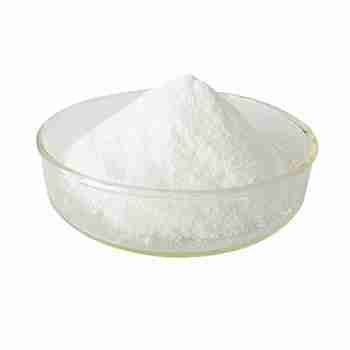KETOTIFEN CAS 34580-13-7
Chemical Name: KETOTIFEN
CAS No.: 34580-13-7
Molecular Formula: C19H19NOS
Molecular Weight: 309.43
Appearance: Light Yellow to Orange Solid
发送询盘
Description
KETOTIFEN Details
Chemical Name: KETOTIFEN
CAS No.: 34580-13-7
Molecular Formula: C19H19NOS
Molecular Weight: 309.43
Appearance: Light Yellow to Orange Solid
KETOTIFEN Typical Properties
Melting point
152-153??
Density
1.236
Colour
Light Yellow to Orange
Appearance
Solid
Solubility
DMSO (Slightly, Heated), Methanol (Slightly)
KETOTIFEN Usage
It has anti-allergic effects and inhibits the release of allergic reaction mediators. It mainly treats allergic rhinitis and allergic bronchitis, and its effect lasts for a long time.
KETOTIFEN Packaging and Shipping
Packing: 25KG/Drum
KETOTIFEN Storage
Amber Vial, -20??C Freezer, Under inert atmosphere
| 5 |
|
0 |
| 4 |
|
0 |
| 3 |
|
0 |
| 2 |
|
0 |
| 1 |
|
0 |
- 2
- 2-diallylpent-4-en-1-amine
- 4
- 95-16-9
- Ammonium sulfamate
- Benzothiazole
- cas:67889-00-3ح2
- cas:83524-75-8 | pigment black 32
- cas:928836-00-4 | 2
- cas:932745-70-5 | 4
- Chemical Minerals
- Coconut diethanolamide
- Daily Chemicals
- discount
- for sale
- General pvc resin
- hexyl D-glucoside
- in stock
- Lauramidopropyl betaine
- LAURIC ACID MONOETHANOLAMIDE
- Petroleum Additives
- Plasticiser
- Ploymers
- price
- PVC
- quotation
- Raw Materal
- Remove term: Petroleum Additives Petroleum Additive
- SODIUM ETHYL 2-SULFOLAURATE
Related Products
Chemical Name: LAPPACONITINE HYDROBROMIDE
Synonyms: Lappaconite HBR; ALLAPININE HYDROBROMIDE
CAS No.: 97792-45-5
Molecular Fomula: C32H45BrN2O8
Molecular weight:?665.61
Appearance: Powder crystal
Assay: ??99.0%
Chemical Name: Choline salicylate
CAS No.: 2016-36-6
Molecular Formula: C12H19NO4
Molecular Weight: 241.28
Appearance: Red-Brown Crystal
Chemical Name: Sodium D-pantothenate
CAS No.: 867-81-2
Molecular Fomula: C9H16NNaO5
Molecular weight:?241.22
Appearance:?White to off-white powder
Assay: ??99.0%
Product name:HYDROXYPROPYL GUAR HYDROXYPROPYLTRIMONIUM CHLORIDE
Purity:99%
Appearance:Light Yellow Powder
Package:Customized according to customer needs.
Sample:Available
Common English name: 5-iodo-2,3-dihydropyridazin-3-one
CAS No.: 825633-94-1
Molecular formula: C4H3IN2O
Molecular weight: 221.98
Sample: Available
Chemical Name: Imazalil Sulfate
CAS No.: 58594-72-2
Molecular Formula: C14H14Cl2N2O.H2SO4
Molecular Weight: 395.26
Appearance: Solid
Chemical Name: Dehydrocholic acid
Synonyms: Acide dehydrocholique; Triketocholanic acid
CAS No.: 81-23-2
Molecular Formula: C24H34O5
Molecular Weight: 402.53
Appearance: Powder
Chemical Name:?Tebipenem pivoxil
CAS No.: 161715-24-8
Molecular Formula: C22H31N3O6S2
Molecular Weight: 497.63
Chemical Name: o-Xylene
Synonyms: 1,2-Dimethylbenzene; ortho-xylene
CAS No.: 95-47-6
Molecular Formula: C8H10
Molecular Weight: 106.17
Chemical Name: Tylosin tartrate
CAS No.:?74610-55-2
Appearance:?white powder
Assay????98.0%
Chemical Name:Sodium Stibogluconate
CAS No.:16037-91-5
Appearance:?White liquid
Assay??99.0%
Levodopa, also known as L-DOPA or 3,4-dihydroxy-L-phenylalanine, is a naturally occurring amino acid and a critical precursor in the biosynthesis of the neurotransmitters dopamine, norepinephrine, and epinephrine. With the molecular formula C9H11NO4, levodopa is a large, neutral amino acid that plays a significant role in the treatment of Parkinson’s disease due to its ability to cross the blood-brain barrier and be converted into dopamine.
Chemically, levodopa is synthesized from the precursor amino acid tyrosine through the action of the enzyme tyrosine hydroxylase. As a medication, levodopa is often formulated with a peripheral DOPA decarboxylase inhibitor to reduce its conversion to dopamine outside the brain, thereby increasing its effectiveness and reducing side effects.
Levodopa is characterized by its effectiveness in alleviating the motor symptoms of Parkinson’s disease, such as tremors, rigidity, and bradykinesia. It is typically administered orally and absorbed from the gastrointestinal tract, where it is then transported to the brain.
In summary, levodopa is a vital pharmaceutical compound used in neurology for its role in treating Parkinson’s disease by replenishing the brain’s dopamine levels. Its targeted delivery and conversion to dopamine make it an essential treatment option for managing the motor symptoms associated with this condition.



















Reviews
There are no reviews yet.